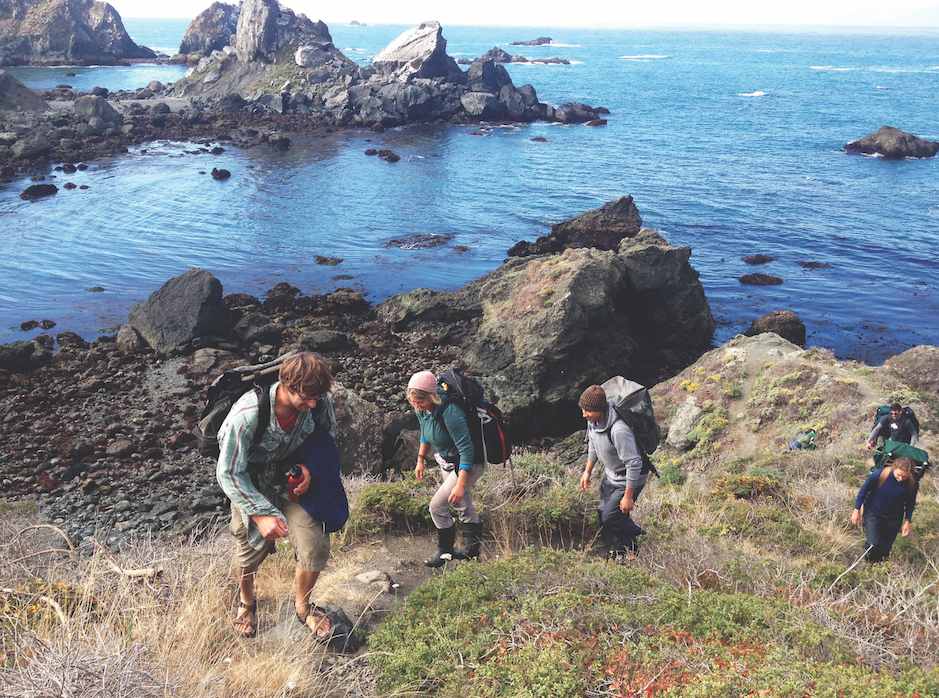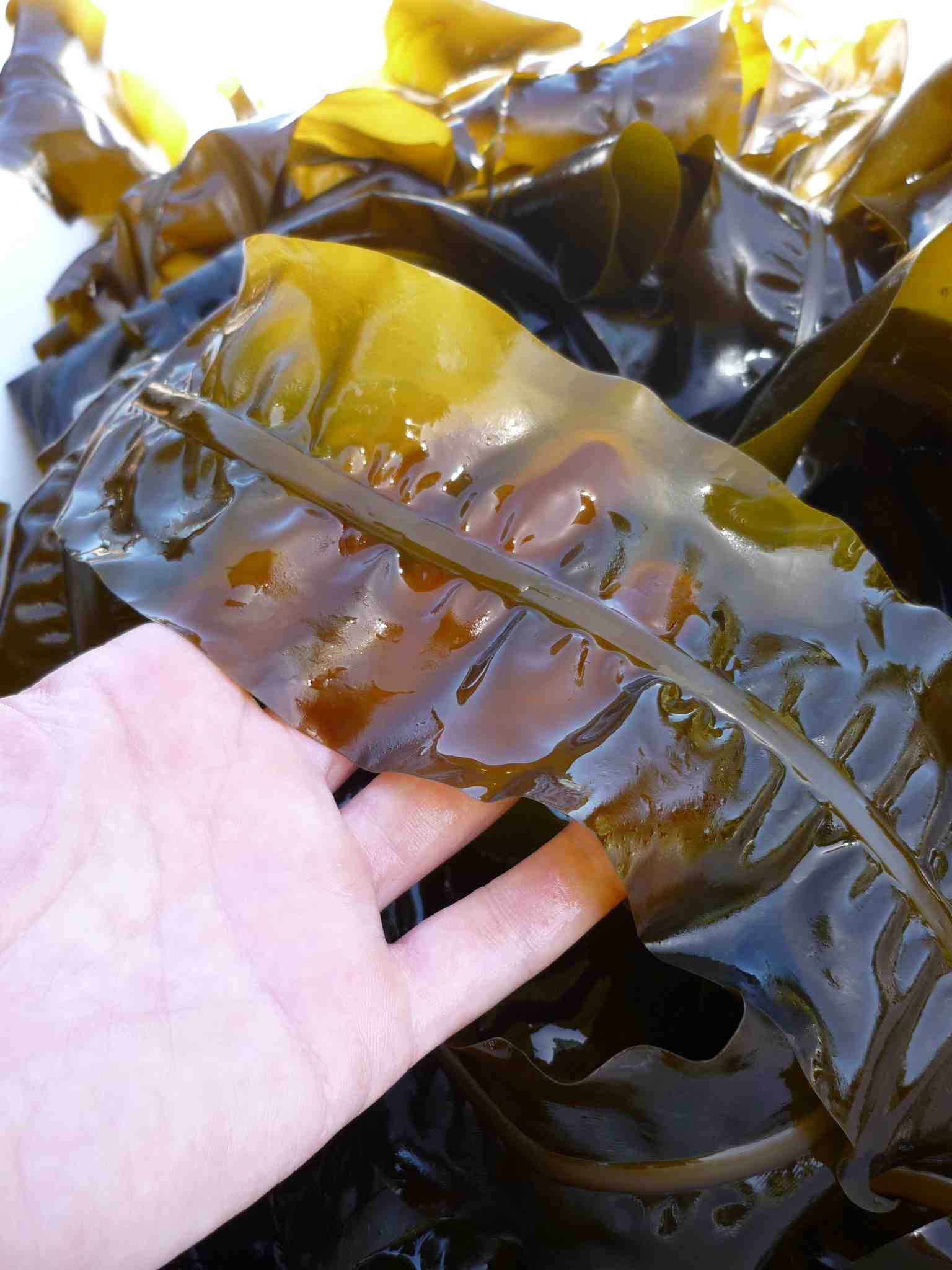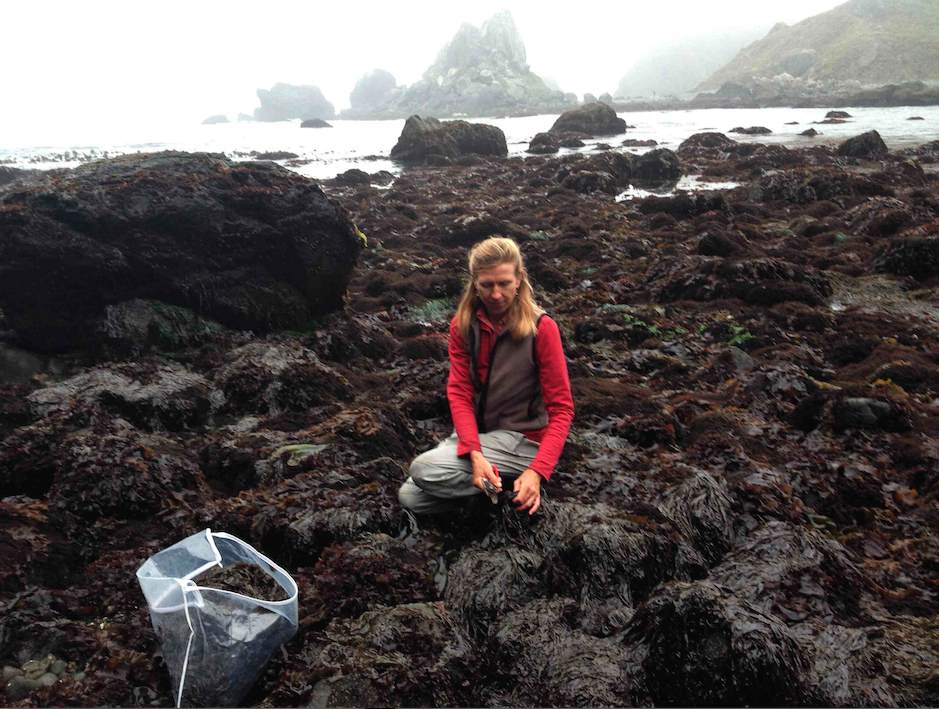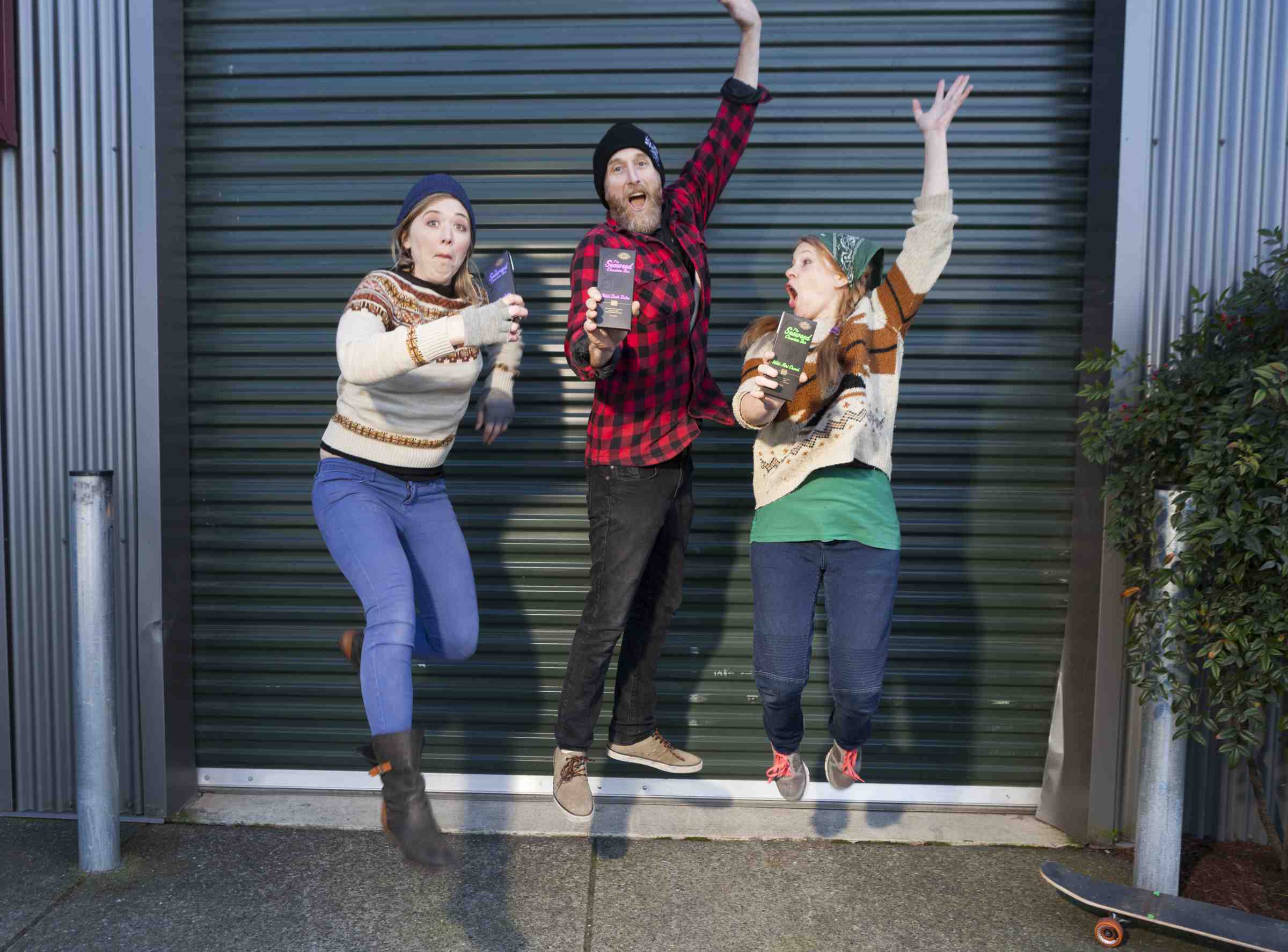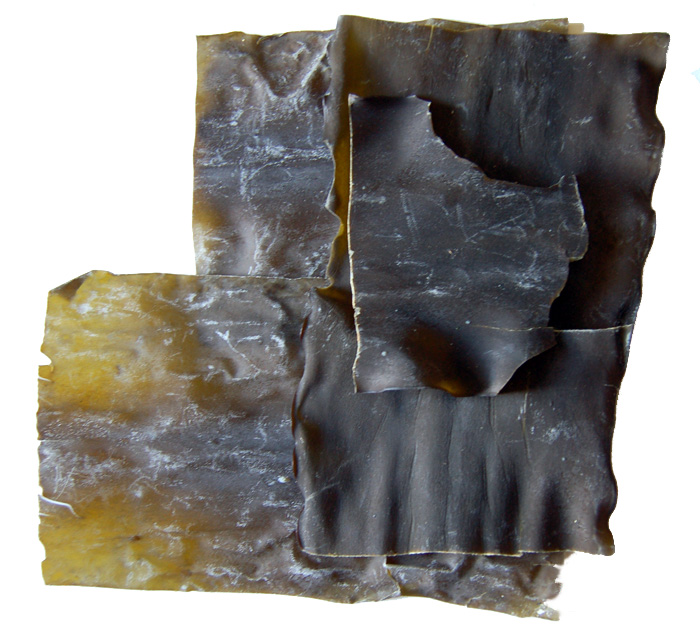Ocean Rich
Seaweed is a regenerative super food that can help heal the earth. All we have to do is to eat it.
The Pacific Ocean heaves forward one breath at a time until the tide is high, then slowly sinks again. As the water recedes, people follow as they’ve been doing in California for over 13,000 years. These tide pool foragers scramble along the edge of the continent to collect what the ocean has laid bare, like mussels, abalone, and seaweed. It’s all edible, but seaweed has been consumed by people for millennia and is a sustaining food of our species. It is believed to have been an important part of the diet of early humans in coastal Africa.
Now it appears that seaweed may play a considerable role in humanity’s future. At the UC Davis Bodega Bay Marine Laboratory, biologist John Largier sees seaweed—from the frilly tufts that grow along the seashore up to the spectacular kelp forests of deeper waters—as food, as energy, and as a tool that could help us fight climate change.
When marine algae grow, Largier explains, they draw nutrients from the water—among them carbon, an element that humans are emitting into the atmosphere at unprecedented rates. Much of that carbon is absorbed by the sea, where it dissolves and creates carbonic acid. Called “ocean acidification,” this process is emerging as a great threat to biodiversity and food security. That’s because increased ocean acidity can kill many invertebrates, like krill, which form the foundation of the marine food web.
Seaweed, Largier explains, can reduce marine acidity by drawing carbon out of the water column.
“But when it decomposes, it releases that carbon dioxide again, so what we want to do is harvest it and use it in a way that puts the carbon into the ground,” Largier says.
John Forster, an aquaculture consultant in Port Angeles, WA, is among several scientists currently attempting to quantify the potential of cultivated seaweed to sequester carbonic acid in Puget Sound. Forster says growing walls of kelp up-current from sensitive communities of invertebrates could shield them from acidic ocean water. The kelp, he explains, would “sweeten” the water that moves through the algal foliage—and harvesting that kelp would offset some degree of carbon accumulation in air and water.
Such kelp could be used as fuel, fertilizer, and animal feed.
“But by far and away the highest value use for it would be as human food,” Forster says. Though the market demand for seaweed is currently small, he says it is growing. And why shouldn’t it be?
“It’s a food that doesn’t need fertilizer and actually uses fertilizers that pollute the ocean,” Forster says. “It’s a food that doesn’t need fresh water, which is a precious resource now. It’s a food that doesn’t need any more land. And, you can make a very strong case that growing seaweed also creates habitat.”
Forster notes that, while burying harvested seaweed would create a net carbon reduction, using it for food would probably not achieve this goal. Unless human waste is deposited underground, the carbon would eventually be cycled back into the atmosphere and sea. Still, Forster says this process would at least be carbon neutral—unlike most conventional food and fuel producing systems, which unlock carbon that has been underground for millions of years and emit it skyward.
However one might pencil out the carbon equation, there certainly is no good reason not to eat seaweed. No marine algae are deadly toxic, and certain species are reputed to offer anti-cancer and thyroid benefits. Seaweed’s high iodine content could even be a boon to prenatal brain development. But the surest reason to eat seaweed may simply be that it tastes good, containing glutamates that impart a briny, meaty marine umami flavor that is appealing. Indeed, seaweed—especially kombu, wakame, sea palm, nori, and bladderwrack—is trending into popularity as a culinary item, with highend retailers, natural foods stores, and star chefs at expensive restaurants all helping to make seaweed cool.
Heidi Herrmann is one of Sonoma County’s main suppliers of locally harvested seaweed. Herrmann collects several choice species along the Sonoma coast, dries the fronds, and sells the crispy products through Strong Arm Farm, the certified organic vegetable farm she co-owns with her partner Scott Knippelmeir in Healdsburg. Several years ago, she added seaweed to her land-based business, and it has since become a staple item.
Spring and summer are the collecting seasons. That’s when long days prompt rapid growth of marine algae, which thrive on sunlight. The summer is also the time of some of the lowest tides of the year. Meanwhile, the hot days just a few miles inland are ideal for sun-drying the kelp.
Herrmann regularly brushes shoulders with other collectors on the shoreline, like Cole Meeker. He co-owns Sea of Change Trading Company and, with wife Anastasia Emmons and business partner Courtney Smith, visits the rocky coves between Jenner and southern Mendocino County several times through the summer. Their products—including their seaweed-studded chocolate bars—are available at high-end specialty markets where demand for them is growing.
Eating seaweed does not require buying it. Anyone may go to the seashore and collect it. No fishing license is required for recreational take, and each collector must only observe boundaries of certain marine reserves, a 10-pound wet weight limit per day, and a prohibition on taking sea palms, a seaweed species that grows like small palm trees covering the rocks and happens to be particularly susceptible to harm from improper harvesting techniques.
Kate Lundquist, a resident of Occidental, has been collecting and eating seaweed for personal use for about 15 years.
“I started gathering wild foods about 25 years ago, and I mainly focused on terrestrial plants,” she says. “Eventually, I started thinking about collecting from the marine environment.”
“Nori grows like a big ejaculation out of the rock” John Stephens-Lewallen
Lundquist, a healing arts practitioner and also the WATER Institute director at the Occidental Arts and Ecology Center, now eats seaweed almost daily. She adds it to stews and salads, packs dried fronds of kelp as trail food, and adds feathery bladderchain kelp to pots of cooking rice. Sometimes, she sprinkles minced seaweed into jars of fermenting kimchee.
“It’s such a great way to get a lot of minerals in a small dose,” she says. “Especially since our terrestrial soils are so degraded, having mineral-rich plants available is super exciting to me.”
Lundquist also bathes with seaweed. She collects what she calls “wave-fall” kelp—seaweed one finds on the beach in heaps deposited by heavy surf—and adds a few large fronds to warm bathwater. The gelatinous properties of the algae turn the water silky and fragrant. Lundquist also uses seaweed’s lubricating properties while massaging patients.
Interest in collecting seaweed seems to be growing at both the recreational and commercial levels. John Stephens Lewallen often walked the shores alone as he filled his seaweed sack in the early days of his career, back in the 1980s. Today, the founder of the Philo-based company Mendocino Sea Vegetable Company shares the foggy summer mornings with more commercial and recreational harvesters than ever before. Rising Tide Sea Vegetables, Ocean Harvest Sea Vegetables, and Gualala Seaweed Products all source from the same shoreline. But the community is overall a friendly one, with – regarded as an important leader and trailblazer for the little industry. Thirty years ago, he saw the virtues of a food source that few others had any interest in eating.
“We had to overcome a real taboo against it,” he says. He has since watched that collective aversion to seaweed turn around, and today the 5,000 wet pounds that he collects each season gets eaten up in short order.
“It’s not like before. Demand is ravenous,” Stephens-Lewallen says. “We can’t even begin to touch it anymore, and it’s growing rapidly. Herbalists are interested in it and gourmet chefs are playing around with it.”
Cole Meeker, of Sea of Change, has also watched demand grow, but he says he doubts enough people will ever undertake the backbreaking labor—and endure the meager profits—of the commercial seaweed trade to significantly cut into his financial livelihood. “It’s really, really hard work,” he says.
A day begins with an alarm clock sounding at 4 a.m. After a drive out to the coast, one must clamber down a steep coastal trail in dawn’s half-light and step cautiously over slick rocks. Then, with garden clippers, harvesters snip kelp one tender frond at a time and eventually haul as much wet seaweed as they can carry in their backpacks up to the highway. Dried on racks in the sun, a day’s harvest shrivels into a fraction of its original wet weight. It takes many trips through the season to produce several hundred pounds of dried, packaged seaweed.
In 2009, when a network of marine reserves was installed along the Sonoma and Mendocino coasts, StephensLewallen worked with regulators and succeeded in keeping most of his historic collecting spots open for seaweed foraging. This consumptive use was given a free pass for good reason: Seaweed is one of the most aggressively regenerative marine resources available.
That is, it grows fast.
“Nori grows like a big ejaculation out of the rock,” says Stephens-Lewallen with a laugh. Wakame also has a particularly impressive regenerative capacity, he says. “You can cut it down to the base and come back two weeks later and it’s all grown out again, like an endless growth coming right out of the rock,” he says.
While sales of seaweed may be rising, Lundquist says there is little, if any, evidence of harvesting pressure other than her own on the remote shores where she collects her seaweed.
But Forster, in Port Angeles, believes seaweed cultivation and harvest is going to boom as the human population grows—and is a good thing.
“It’s so exciting,” he says. “It’s all ahead of us. Look at what happened with agriculture in the last 200 years. Now we’ve got the world of sea vegetables to explore. There’s going to be a whole lot more of us on the planet, and there’s a whole lot of space offshore where we could grow our food, and growing seaweed will have some real benefits.”
Know Your Veggies
The California coast is home to many algae species, but those of interest to local foragers are kombu, wakame, sea palm, nori, and bladderwrack. Each has its special virtues.
Kombu is particularly high in naturally occurring glutamates, the compounds we have to thank for seaweed’s umami flavor. It also produces the most slime when wet, a culinary virtue that thickens soups and broths.
Wakame is a tender green kelp that is popularly used in seaweed salads.
Nori which dries up like black tissue paper, is high in protein, making it a dietary target for many vegans and vegetarians.
Bladderwrack is especially sought after by herbalists for its high content of iodine, which can help counter thyroid disease, according to Strong Arm Farms’ Heidi Herrmann.
Sea palms may be processed into kimchee or preserved by pickling. —A.B.
Article resources:
oaec.org/our-work/projects-and-partnerships/water-institute

